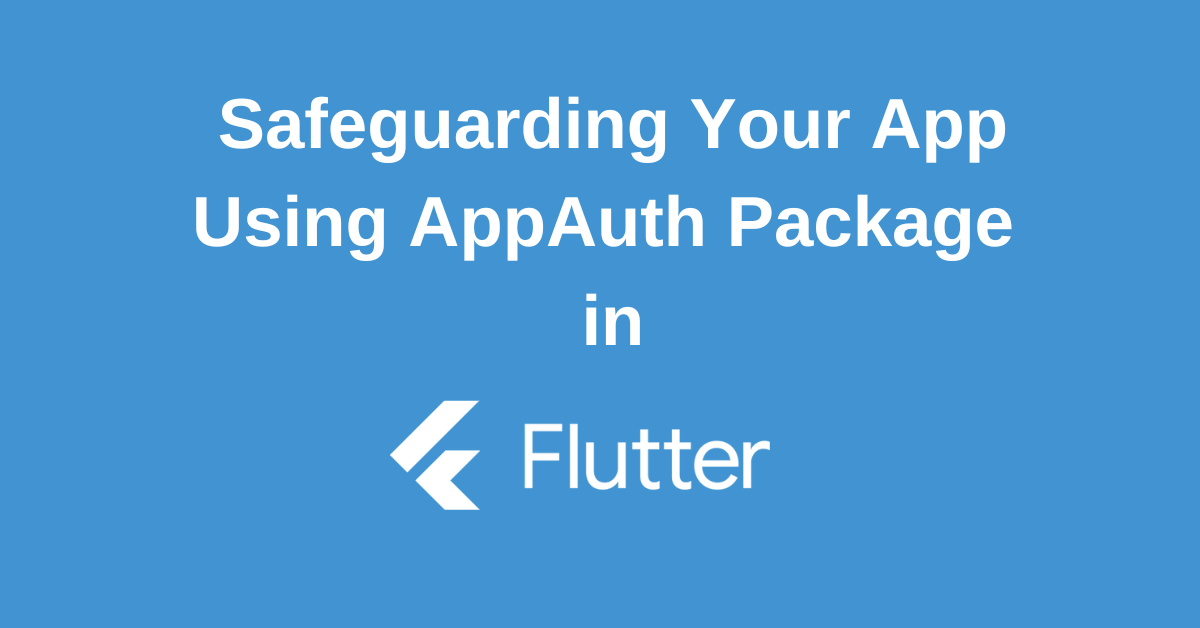In today’s digital landscape, security is paramount for any application. For Flutter developers, ensuring robust authentication and authorization is crucial to protect user data and build trust. This guide delves into the world of Flutter AppAuth, a powerful library that simplifies the implementation of OAuth 2.0 and OpenID Connect flows. By understanding and effectively utilizing AppAuth, you can significantly enhance your app’s security posture and provide a seamless user experience.
What is Flutter AppAuth?
Flutter AppAuth is a powerful Flutter plugin that simplifies the implementation of OAuth 2.0 and OpenID Connect authentication flows. It acts as a bridge between your Flutter app and the underlying native AppAuth SDKs for iOS and Android.
By using AppAuth, you can securely access protected resources like user data, profiles, or images from various OAuth providers without having to manage complex authentication logic yourself. It supports both authorization code flow and implicit flow, providing flexibility for different authentication scenarios.
How Flutter AppAuth Works?
Flutter AppAuth handles the complexities of OAuth 2.0 and OpenID Connect, making user logins seamless. The process involves redirecting users to the authorization server, obtaining authorization codes, exchanging them for access and refresh tokens, and finally using the access token to access protected resources. This intricate dance between your app, the user, and the authorization server is managed efficiently by AppAuth, ensuring security and user experience
Deep Dive into Flutter AppAuth
Flutter AppAuth uses the secure authorization code flow. It sends a request to the authorization server, receiving user details and an authorization code in response. The server redirects the user back to your app with a unique URL containing the code. This code is then exchanged for an access token, granting your app access to protected resources. Make sure to configure the callback scheme correctly to ensure proper redirection after login.
Understanding Authorization Code in Flutter appauth
The authorization code is simply an intermediary token used in the authentication process. The authorization server provides this code, which can be exchanged for an access token.
For this, the OAuth 2.0 protocol involves redirecting to an authorization endpoint, and the user consents to the permissions requested by the application.
Role and Working of Access Token in Flutter appauth
The access token is essential for accessing protected resources. It has a limited lifespan. Once expired, the refresh token is used to obtain a new access token, ensuring uninterrupted service.
class MyApp extends StatelessWidget {
Future<void> getToken() async {
final AuthorizationTokenResponse result =
await appAuth.authorizeAndExchangeCode( AuthorizationTokenRequest(CLIENT_ID, REDIRECT_URL, discoveryUrl: DISCOVERY_URL, scopes: SCOPES, promptValues: ['login']));
// setting access token in secure storage
secureStorage.writeSecureData('access_token', result.accessToken);
}
}In the above code block, the authorizeAndExchangeCode method from the AppAuth API is used to obtain the access token. After authorization, the token is then securely stored for future use for user data requests.
Interacting with Resource Server using Flutter appauth
Interacting with Resource Server using Flutter appauth
class MyApp extends StatelessWidget {
Future<void> getUserDetails() async {
final String accessToken = secureStorage.readSecureData('access_token');
final http.Response response = await http.get( url, headers: { 'Authorization': 'Bearer $accessToken', }, );
final Map<String, dynamic> userData = jsonDecode(response.body);
// setting user details in secure storage
secureStorage.writeSecureData('user_details', userData['name']);
}
}In this snippet, we perform an HTTP GET request to the resource server’s API endpoint, which returns the user details. The access token is passed along in the header for authorization.
Implementing User Interface with Flutter AppAuth
First, let’s create a login button on the Flutter app, which will initiate the OAuth 2.0 authorization code flow upon clicking.
class MyApp extends StatefulWidget {
@override
_MyAppState createState() => _MyAppState();
}
class _MyAppState extends State<MyApp> {
...
RaisedButton(
child: const Text('Login'),
onPressed: () {
// initiate login here
},
),
}On clicking the login button, app users will be redirected to the authorization server’s login page (designed by the authorization server), not within the Flutter appauth. This is very beneficial since Flutter developers won’t worry about user authentication design problems.
Conclusion
By mastering Flutter AppAuth, you’ve taken a significant step towards safeguarding your Flutter application. Implementing secure authentication and authorization practices is no longer a daunting task but an essential component of building robust and trustworthy apps. AppAuth provides a solid foundation for handling OAuth and OpenID Connect flows, allowing you to focus on core app functionalities while maintaining a high level of security. Remember, user data is precious, and protecting it should be a top priority. With AppAuth as your ally, you can confidently build secure and user-centric Flutter applications.
Wanna Level up Your Flutter game? Then check out our ebook The Complete Guide to Flutter Developement where we teach you how to build production grade cross platform apps from scratch.Do check it out to completely Master Flutter framework from basic to advanced level.

